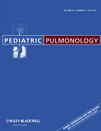Plasma TGF-β1 in pediatric cystic fibrosis: Potential biomarker of lung disease and response to therapy†
The authors have no financial conflicts of interest to discuss.
Abstract
Introduction
Transforming growth factor beta-1 (TGF-β1) is an important genetic modifier of lung disease severity in cystic fibrosis (CF), yet the mechanism behind this disease association remains unknown. Initial steps in the investigation of the relationship between TGF-β1 and CF lung disease include determining the most appropriate available biospecimen for TGF-β1 protein measurement.
Hypothesis
In hospitalized pediatric CF patients, plasma TGF-β1 is increased in association with clinical parameters of lung disease severity.
Methods
Serum and plasma were obtained pre- and post-intravenous antibiotic therapy in pediatric CF patients hospitalized for a pulmonary exacerbation. Total TGF-β1, measured via ELISA, was compared with markers of lung disease, including airway microbiology, lung function, and response to therapy.
Results
Forty CF children were studied, 15 of whom underwent bronchoalveolar lavage (BAL) at the time of admission. Plasma TGF-β1 positively correlated with BAL fluid (BALF) TGF-β1 (r = 0.59, P < 0.05). Admission plasma TGF-β1 was increased in subjects positive for Pseudomonas aeruginosa (P = 0.014) and was inversely associated with diminished lung function (P < 0.038) after therapy. Treatment with antibiotics significantly decreased plasma TGF-β1 (P < 0.001). Serum TGF-β1 was not associated with plasma TGF-β1, BALF TGF-β1, or these clinical parameters of lung disease.
Conclusion
In pediatric CF, plasma (but not serum) TGF-β1 is increased in association with Pseudomonas infection and lung disease, and is reduced in response to therapy. These findings emphasize the importance of optimizing biospecimen selection for future studies investigating the role of TGF-β1 in CF lung disease. Pediatr. Pulmonol. 2011; 46:688–695. © 2011 Wiley-Liss, Inc.




